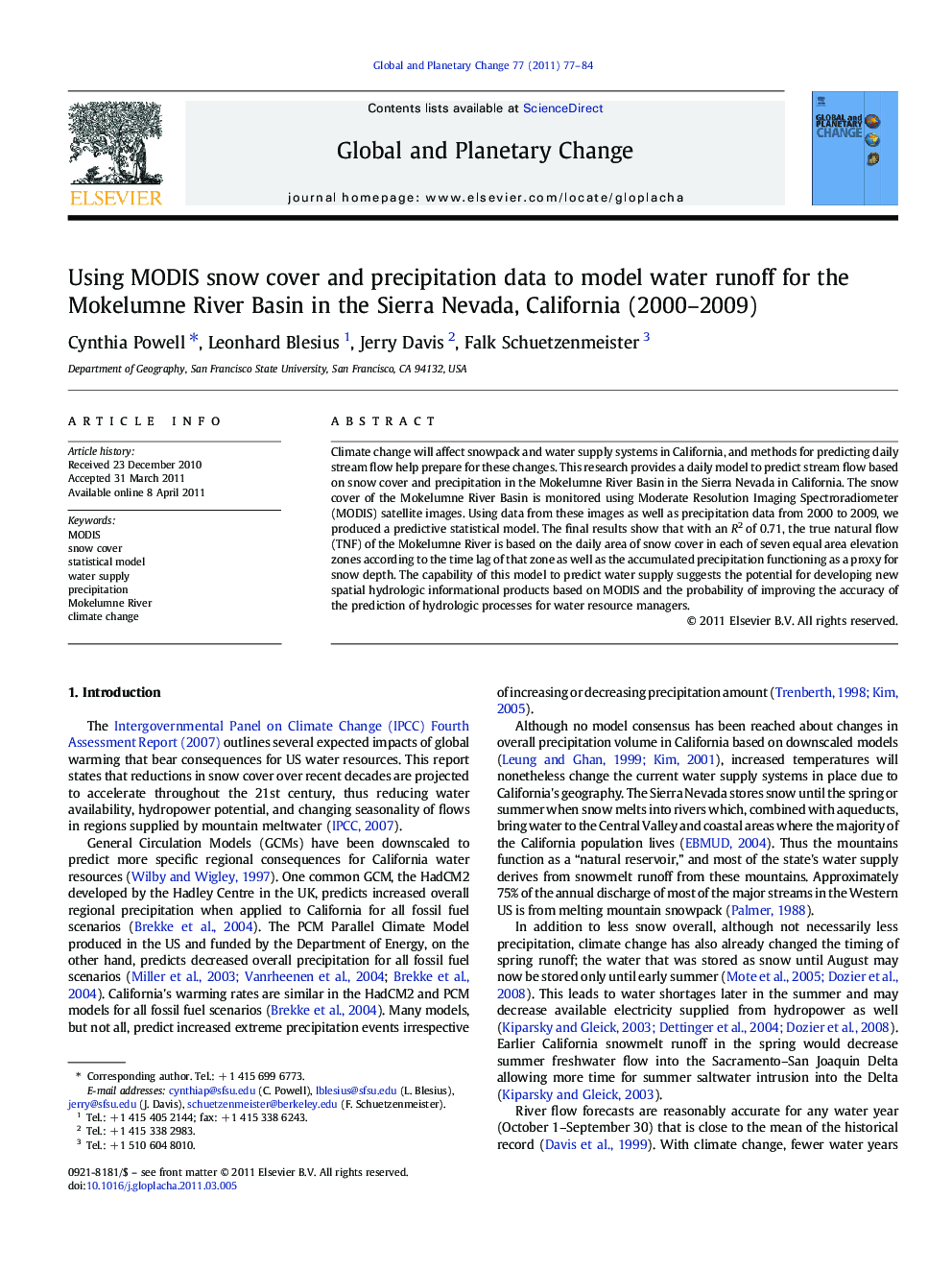| Article ID | Journal | Published Year | Pages | File Type |
|---|---|---|---|---|
| 4463843 | Global and Planetary Change | 2011 | 8 Pages |
Climate change will affect snowpack and water supply systems in California, and methods for predicting daily stream flow help prepare for these changes. This research provides a daily model to predict stream flow based on snow cover and precipitation in the Mokelumne River Basin in the Sierra Nevada in California. The snow cover of the Mokelumne River Basin is monitored using Moderate Resolution Imaging Spectroradiometer (MODIS) satellite images. Using data from these images as well as precipitation data from 2000 to 2009, we produced a predictive statistical model. The final results show that with an R2 of 0.71, the true natural flow (TNF) of the Mokelumne River is based on the daily area of snow cover in each of seven equal area elevation zones according to the time lag of that zone as well as the accumulated precipitation functioning as a proxy for snow depth. The capability of this model to predict water supply suggests the potential for developing new spatial hydrologic informational products based on MODIS and the probability of improving the accuracy of the prediction of hydrologic processes for water resource managers.
Research highlights► Created a daily model to predict stream flow based on snow cover and precipitation. ► R2 of this model is 0.71 and it should be useful to water managers across the world. ► Divided basin into seven elevation zones to alleviate satellite cloud problems. ► Accumulated precipitation served as a proxy for snow depth.
